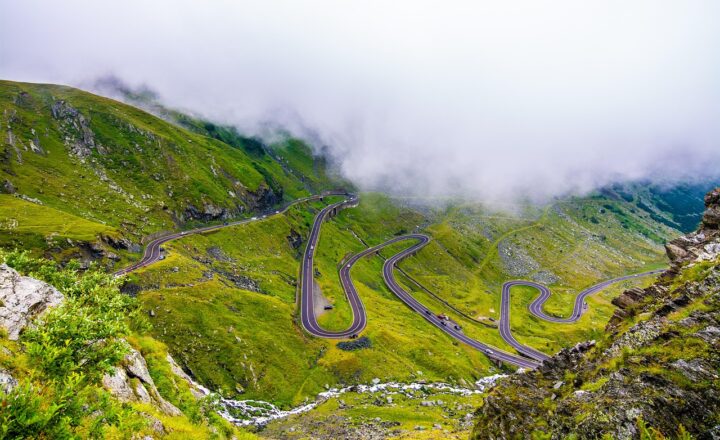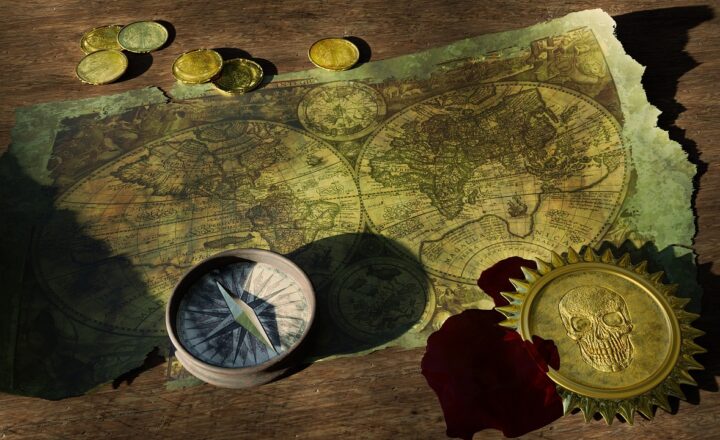Exploring the World’s Most Famous Pilgrimage Trails: A Journey for Body and Soul
November 13, 2024

Pilgrimages have been a significant aspect of cultural and spiritual life across the world for centuries. These journeys, often traversing breathtaking landscapes, offer not only a physical challenge but also a chance for personal reflection and spiritual growth. In this article, we’ll dive into some of the world’s most famous pilgrimage trails, exploring their history, significance, and what they can offer to those willing to undertake them.
1. The Camino de Santiago, Spain
The Camino de Santiago, or the Way of St. James, is one of the most famous pilgrimage routes in the world. This historic trail leads to the shrine of the apostle Saint James the Great in the cathedral of Santiago de Compostela in Galicia, Spain. For centuries, Christians have traversed these paths as an act of faith, and today, pilgrims from all walks of life partake in this journey.
History and Significance
The Camino became a significant pilgrimage in the Middle Ages, drawing thousands from all over Europe. The entire network includes various routes, but the most popular are the Camino Francés, which starts in St. Jean Pied de Port, and the Camino Portugués, beginning in Lisbon. Pilgrims embark on this trek not just for religious reasons but also for the beautiful landscapes, historic towns, and the chance for introspection.
What to Expect
Hiking the Camino is not merely a physical endeavor; it’s a meditative experience. Along the way, hikers encounter quaint villages, stunning cathedrals, and fellow pilgrims, often leading to moments of camaraderie and shared stories.
Many choose to walk the Camino for personal reasons, such as healing after a loss or seeking direction in life. The camaraderie with fellow walkers enhances the experience, creating lifelong connections. However, it is essential to prepare adequately, wear suitable footwear, and carry a lightweight backpack for comfort.
2. The Kumano Kodo, Japan
The Kumano Kodo is an ancient pilgrimage network located in the Kii Peninsula of Japan. Designated as a UNESCO World Heritage Site, it connects several sacred sites, including the three Grand Shrines of Kumano: Hongu, Hayatama, and Nachi.
History and Significance
The origins of the Kumano Kodo date back over a thousand years, making it one of Japan’s most revered spiritual journeys. Pilgrims historically traveled to these sacred sites, which were believed to be imbued with powerful spiritual energy. Today, both local and foreign travelers walk these trails for spiritual renewal and cultural immersion.
What to Expect
The trails range in difficulty and length, with options for both seasoned hikers and those seeking a leisurely stroll in nature. Along the way, you can experience stunning views of mountains, lush forests, and historical temples. The traditional ryokans (Japanese inns) along the route provide authentic cultural experiences, allowing pilgrims to savor local cuisine and relax after a long day of hiking.
Walking the Kumano Kodo invites travelers to disconnect from their routine lives, indulge in mindful walking, and embrace the beauty of nature.
3. The Via Francigena, Europe
The Via Francigena, an ancient route that stretches from Canterbury in England to Rome in Italy, is a multifaceted pilgrimage that combines rich history, spirituality, and diverse landscapes.
History and Significance
Initially traveled by pilgrims during the Middle Ages, the Via Francigena has seen continuous use over the centuries. Each section of the route offers glimpses of Europe’s history, architecture, and culture. Pilgrims making their way to Rome often seek blessings and spiritual encounters, making their journey profoundly meaningful.
What to Expect
Embarking on the Via Francigena means diving into Europe’s diverse cultures. From the English countryside to the majestic Alps and the vibrant Italian towns, travelers will experience a blend of culinary delights, scenic vistas, and historical landmarks. Accommodation varies from hotels to monasteries, providing unique retreats post-hike.
Fellow pilgrims may share stories along the journey, and many describe this trek not just as a physical achievement but as a transformative spiritual experience.
4. The Hajj, Saudi Arabia
The Hajj is one of the Five Pillars of Islam, an annual Islamic pilgrimage to Mecca. Each year, millions of Muslims from around the globe come to perform a series of rituals during Hajj, fulfilling a spiritual obligation and seeking forgiveness.
History and Significance
The Hajj dates back to the time of the Prophet Muhammad and signifies submission to God’s will. It represents unity among Muslims and serves as a powerful reminder of humility and devotion. Rituals include walking around the Kaaba, standing at Arafat, and the symbolic stoning of the devil.
What to Expect
The atmosphere during Hajj is electric. Participants engage in various rituals meant to cleanse the soul and deepen their faith. Hajj promotes equality, as all pilgrims wear similar clothing regardless of their social status. The profound sense of community is overwhelming, as believers from diverse backgrounds unite for a common purpose.
For Muslims, completing the Hajj is an aspiration, and it typically leaves a lasting impression on the soul, emphasizing their connection with God and fellow humans.
5. The Inca Trail, Peru
While not a traditional pilgrimage in the spiritual sense, hiking the Inca Trail to Machu Picchu holds a ritual aspect for many travelers. It’s a connection to the ancient Incan civilization, showcasing the breathtaking beauty of the Andes.
Historical Significance
The Inca Trail was originally used by the Incas for trade and religious pilgrimages. Today, it represents a bridge to the past, offering insights into the Incan civilization through its remarkable engineering and architecture.
What to Expect
The trek covers approximately 26 miles, featuring high-altitude passes, lush cloud forests, and ancient ruins. Each step not only brings panoramic views but also an opportunity for self-discovery.
Trekkers are encouraged to reflect on their journey; many experience personal revelations amidst the natural beauty and historical remnants. The challenge of the hike is matched by the reward of reaching the extraordinary Machu Picchu, a UNESCO World Heritage site.
Conclusion
Pilgrimage trails are more than mere trails; they serve as pathways to renovation and transformation, offering diverse experiences that cater to the body and spirit. The journeys outlined above represent just a small fraction of the pilgrimage possibilities available to seekers around the globe. Each trail is rich with history and culture, guiding seekers towards personal insight and spiritual renewal. Whether for religious reasons or personal exploration, embarking on a pilgrimage can be a profound experience that lingers long after the journey ends. Walking these ancient paths invites you not only to explore the world but to embark on your journey, creating memories and learning about yourself along the way.






